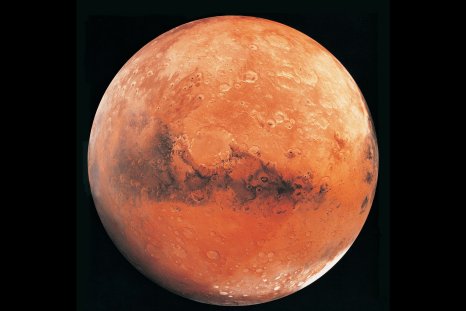The final Manhattanhenge of the year is about to hit New York this weekend, with people flocking from all around to snap a picture of the city's spectacular phenomenon.
The event, named after Stonehenge in the U.K., occurs only twice a year, when the setting sun aligns perfectly with Manhattan's east-west streets, on either side of the summer solstice.
This year, the full Manhattanhenge occurs Friday, following the previous full event on May 29. On May 28, a "half" Manhattanhenge occurred, with only half of the setting sun framed by the city's east-west grid, and it will happen again on Saturday.
How to Watch Manhattanhenge
Manhattanhenge will start in all its glory at 8:20 p.m. ET on Friday, with the half Manhattanhenge beginning at 8:21 p.m. the next day.
The best places to view Manhattanhenge include wide streets with unobstructed views toward New Jersey, such as 14th Street, 23rd Street, 34th Street, 42nd Street and 57th Street, as these are wide streets with excellent framing for the spectacular sunset. The Tudor City Bridge and Hunter's Point South Park in Long Island City, Queens, are also popular viewing spots.
"It is all about the angle. If you go off the grid by even a degree you will be out of alignment," Jacqueline Faherty, an astrophysicist at the city's American Museum of Natural History, previously told Newsweek.
"As long as you can see all the way across Manhattan to New Jersey, you will catch the event. I always tell people to decide by their favorite buildings and then map out a safe way to find yourself in the middle of the street," she said.
To get the best experience, it's recommended that you arrive at your chosen viewing location at least 30 minutes before sunset because these spots tend to get very crowded.
Of course, the best viewing depends on the weather cooperating. Unfortunately, rain is forecast for Friday evening, so the full Manhattanhenge may not be visible. Saturday evening may have clear skies, however, so the half Manhattanhenge may be visible.
Other cities around the world experience their own "henge" events along their east-west streets. Chicagohenge and Baltimorehenge occur in March and September, and Torontohenge is in February and October. The dates of these events are determined by the sun's geometric alignment with the city's street grid. Manhattanhenge occurs in May and July because Manhattan's street grid is oriented 29 degrees east of true north.
"In the 1800s, a plan was put in place to guide the development of the island, and the commissioners at that time decided to create 90-degree angles with the cross streets, which happen to face, in general, east-west," Faherty said. "When they did that, they created a bull's-eye for the sun to hit when it sets on or around May 29 and July 11."
The Earth's axial tilt and its orbit around the sun cause the sun to rise and set at different points along the horizon throughout the year, meaning that on certain dates this point aligns exactly with the street grid. If a city's streets were exactly east-west facing, its "henge" would occur on the spring and autumn equinoxes, around March 20 and September 23.
A "reverse Manhattanhenge" also occurs twice a year, when the sunrise is framed by the east-west streets. This can be seen in December and January, flanking the winter solstice, but usually brings far fewer people to watch the display.
Do you have a tip on a science story that Newsweek should be covering? Do you have a question about Manhattanhenge? Let us know via science@newsweek.com.
Disclaimer: The copyright of this article belongs to the original author. Reposting this article is solely for the purpose of information dissemination and does not constitute any investment advice. If there is any infringement, please contact us immediately. We will make corrections or deletions as necessary. Thank you.



